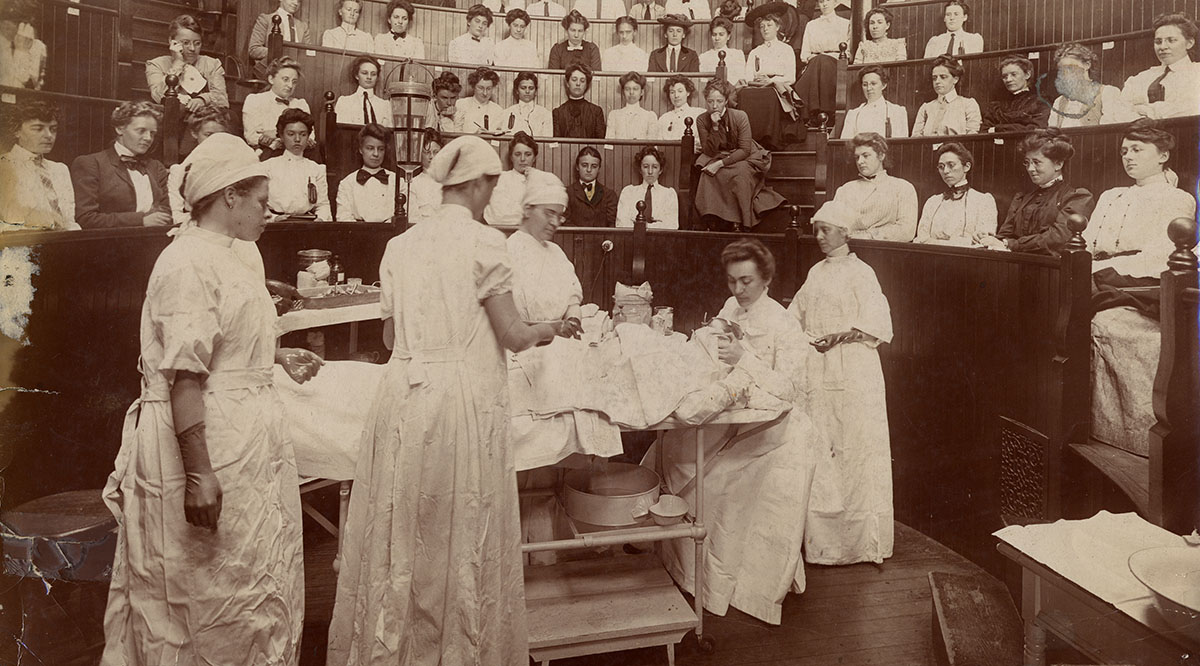
FAQ About Women in the History of Medicine
Women in the History of Medicine
2 years ago | gizem
Who were the "Hidden Figures" in the history of space medicine?
The term "Hidden Figures" refers to a group of African American women mathematicians and engineers who made significant contributions to the early days of the U.S. space program, particularly at NASA (the National Aeronautics and Space Administration). Their work was vital in the fields of mathematics, engineering, and space science, including space medicine. While they are best known for their roles in the broader space program, their contributions indirectly impacted space medicine through their work in the larger aerospace community. Some notable "Hidden Figures" include:
- Katherine Johnson: Katherine Johnson was a mathematician and physicist known for her precise calculations related to orbital mechanics and trajectories. Her work was instrumental in the success of several early space missions, including the first human spaceflight by an American, Alan Shepard. Her calculations helped ensure the safety of astronauts during their missions.
- Dorothy Vaughan: Dorothy Vaughan was a mathematician and computer programmer who worked as the supervisor of the West Area Computers, a group of African American women mathematicians at NASA. Her leadership and expertise in programming were crucial in the early days of electronic computing.
- Mary Jackson: Mary Jackson was an engineer and mathematician who worked at NASA. She started as a human computer and later became NASA's first female African American engineer. Her work involved studying the aerodynamics and thermal characteristics of aircraft and spacecraft.
- Dr. Christine Darden: Although not featured in the book and film "Hidden Figures," Dr. Christine Darden was another African American mathematician and engineer at NASA. Her research focused on supersonic flight and sonic boom prediction, areas that have implications for astronaut safety and space vehicle design.
Other Questions About Women in the History of Medicine
- Who was the first woman to practice medicine?
- What contributions did Hippocrates' wife, Agnodice, make to medicine?
- Who was the first female physician in the United States?
- What role did women play in early herbal medicine?
- Who is considered the first female surgeon in history?
- Can you name some famous female healers from ancient civilizations?
- What were some challenges women faced in pursuing medical careers in the past?
- Who was Elizabeth Blackwell, and why is she significant in medical history?
- What was the impact of the Flexner Report on women in medicine?
- Who were the "Edinburgh Seven," and what did they achieve in medicine?
- What role did women play during the Civil War in medical care?
- How did World War I affect opportunities for women in medicine?
- Who was Gerty Cori, and what were her contributions to medicine?
- Can you name some pioneering women in the field of nursing?
- What was the significance of the Nightingale Pledge?
- Who was Mary Edwards Walker, and why is she notable in medical history?
- How did women's involvement in medical research evolve over time?
- Who was Virginia Apgar, and what did she develop in the field of medicine?
- What contributions did Rosalind Franklin make to understanding the structure of DNA?
- Who was Barbara McClintock, and what did she discover in genetics?
- How did the women's suffrage movement intersect with the history of women in medicine?
- Who were the "Harvard Computers," and what role did they play in astronomy and medicine?
- What were some challenges faced by female medical students in the 20th century?
- How did the development of birth control impact women's reproductive health and medicine?
- Who was Margaret Sanger, and what was her role in reproductive health advocacy?
- What was the impact of the thalidomide tragedy on women in medicine?
- Who were the "Hidden Figures" in the history of space medicine?
- How did the feminist movement of the 1960s and 1970s influence women in medicine?
- What is the Women in Medicine Movement, and when did it emerge?
- Who were some notable female physicians and researchers in the AIDS epidemic?
- What contributions did Dr. Helen Brooke Taussig make to pediatric cardiology?
- Who was Rita Levi-Montalcini, and what did she discover about nerve growth factors?
- How has the representation of women in medical textbooks evolved over time?
- What challenges do women still face in the field of surgery?
- Who was Dr. Virginia Apgar, and what is the Apgar Score?
- What is the significance of the "Pink Glove Dance" in promoting breast cancer awareness?
- How has gender diversity in medical leadership evolved in recent decades?
- Who was Dr. Mona Hanna-Attisha, and what role did she play in exposing the Flint water crisis?
- What contributions have women made to the field of global health?
- How has the #MeToo movement impacted discussions about gender discrimination in medicine?
- What initiatives and organizations support women in medicine today?

Create new FAQ page, write FAQs and publish for your clients, friends, colleagues, visitors, students, customers, guests, neighbors, or yourself.
Create Your Own FAQ Page now